Today we went to the Massachusetts Historical Society for a second visit. We arrived at the MHS at about 10:00 AM. We had a special speaker this morning, Dr. Pauline Maier who was the author of one of our textbooks, “American Scripture.” She was very interesting to listen to, and is very knowledgeable about the Declaration of Independence. In addition to here excellent discussion, there were some nice artifacts on display for us to look at. First there was the so-called “Stone” copy. No, it’s not made out of stone, but is a facsimile that was printed by someone named Stone. The copies were made from an engraving that was made directly from the ink of the original version that is now in Washington D.C. After that engraving was made, only 202 copies were printed, and then the plate was destroyed. The engraving also replicated all the signatures that were on the original. It is quite amazing to look at. Here it is…
The next two versions on display were both typeset and printed, although they were set and printed in 1776 and 1777. The 1776 version does not have the names printed on the bottom. It is very rare, as only about 20 of these survive today. These were sent to the various colonies to be read to their citizens and officials. The other artifact, known as the “Goddard” print was typeset in 1777 and does have all the signers’ names at the bottom, organized by state. The other thing that was cool was that this print was “authenticated” with an actual signature of John Hancock at the bottom. Here is the Goddard copy:
Dr. Maier mentioned the rise of the “Cult of Autographs” in the 1820’s. Why was there this interest in autographs during this period? Autographs were the only way to “remember” someone – as photos still didn’t exist, and these important people from the foundation of our nation were reaching the twilight of their lives.
Dr. Maier also posed some questions to the class such as:
- Why do we Americans seem to place such an emphasis on the Declaration of Independence?
- Why do so many Americans seem to get the Declaration and the Constitution, and even the Bill of Rights all “mixed-up?”
- Should Thomas Jefferson get as much credit as he seems to get by Americans in his role of writing the Declaration?
We had a nice discussion of these topics, and talked quite a bit about the subject matter. She was so interesting, that the time really went by fast, and before I knew it – it was time for lunch. After lunch, we got to see some more very nice artifacts. Again, it was really an amazing experience to see and actually get to hold the documents in my hand. Here is what we were able to see/and hold:
- An actual handwritten copy of the Declaration written by John Adams. There was not a real good explanation of why he wrote out his own personal copy. The MHS was able to acquire it through the all of the Adams letters that have in their collection.
- An actual handwritten rough draft (albeit some pages were missing) as written by Thomas Jefferson. Historians are pretty sure it was written by him – based on the antiquity and handwriting comparison. So, if indeed it was his work, again – I was able to hold that in my hand!
- Jefferson’s personal almanac that contained some handwritten notes in the back – such as his expenses he had incurred. We actually didn’t get to touch this as it wasn’t in any protective covering.
- We read a really cool letter from John Adams that correctly predicted the future significance of the Fourth of July as an important national holiday, although he wrote in his letter that the date would be July 2. But again, it was a special experience to read John Adams’ words and hold his own manuscript in my hands!
Here is the Adams copy of the Declaration:
Here is the Jefferson manuscript of the Declaration….
And here is the rare type-set copy of the Declaration (only about 20 exist) that was sent out in 1776. Notice that the signers’ names are not present…
The day concluded with a tour of the Massachusetts Historical Society’s web site. The site is an amazing collection of activities, transcribed primary sources, and actual scans of the primary sources. We were given a password and username to use the site, and I am certain that I will be using the site for my AP American History class. Well, tomorrow is the last full day here in New England. We are off to the Lowell textile mill – so stay tuned for the final chapter, Cheers!
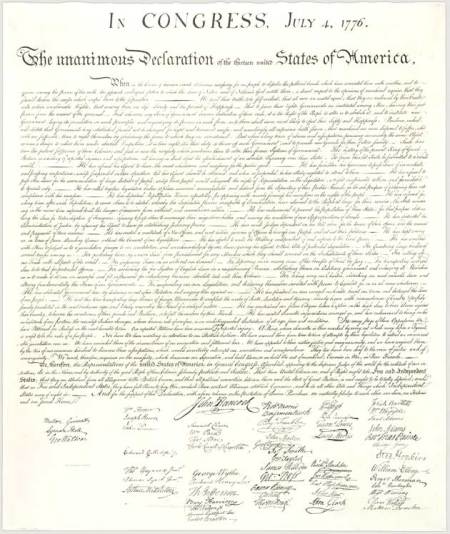
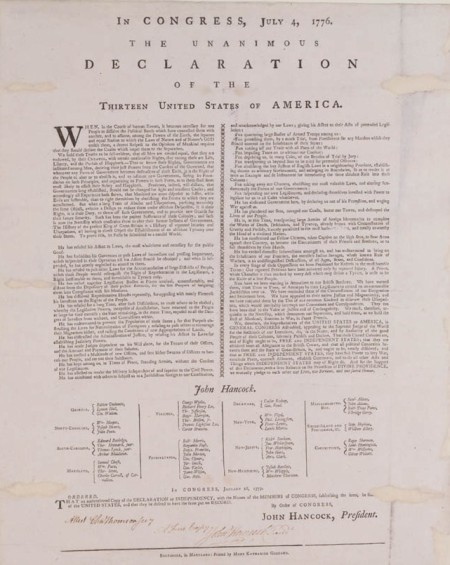
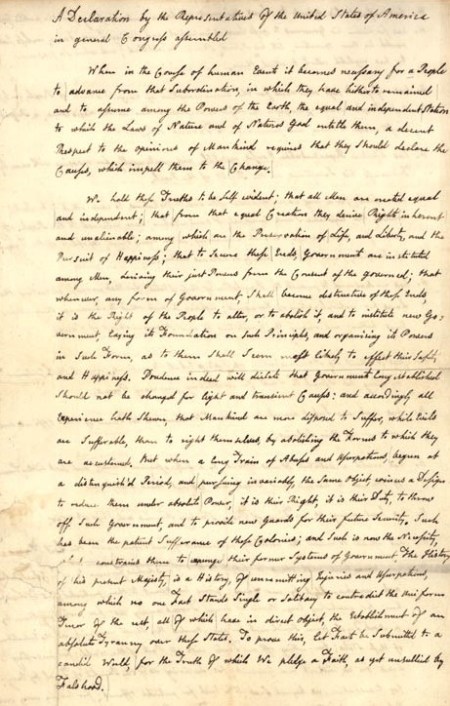
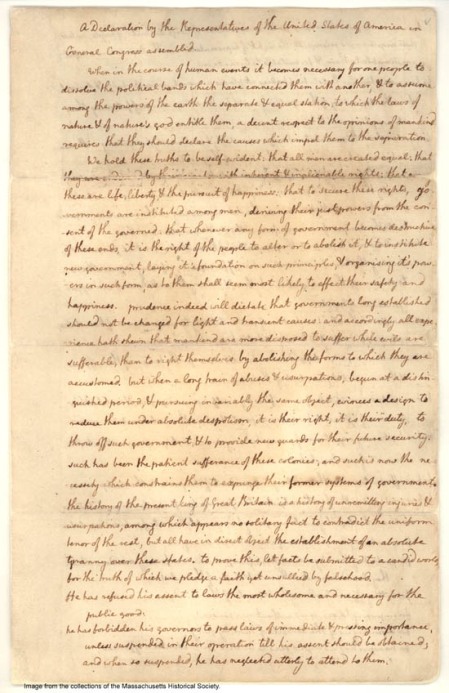
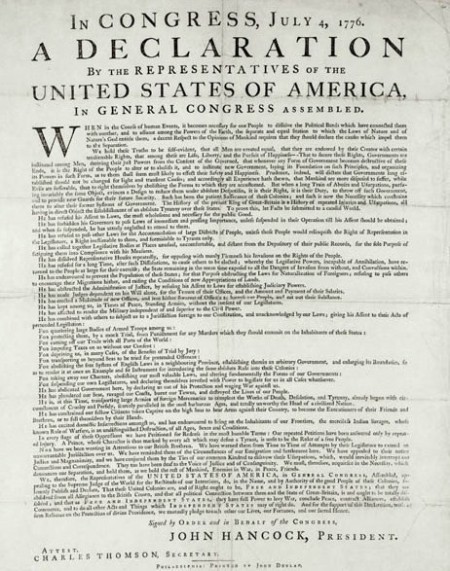
June 16, 2007 at 12:59 pm
John, I’ve so enjoyed reading your blogs over these two weeks. You are extremely thorough and knowledgeable. Would you be my teacher?? 🙂 Kelli